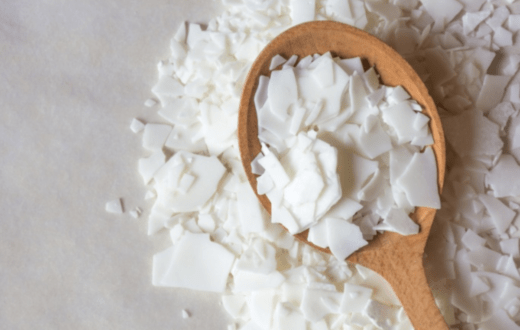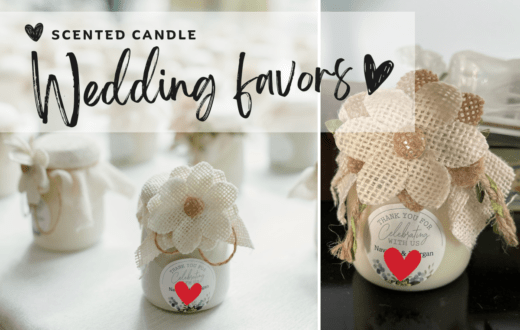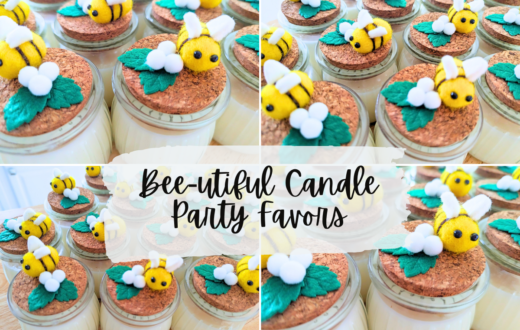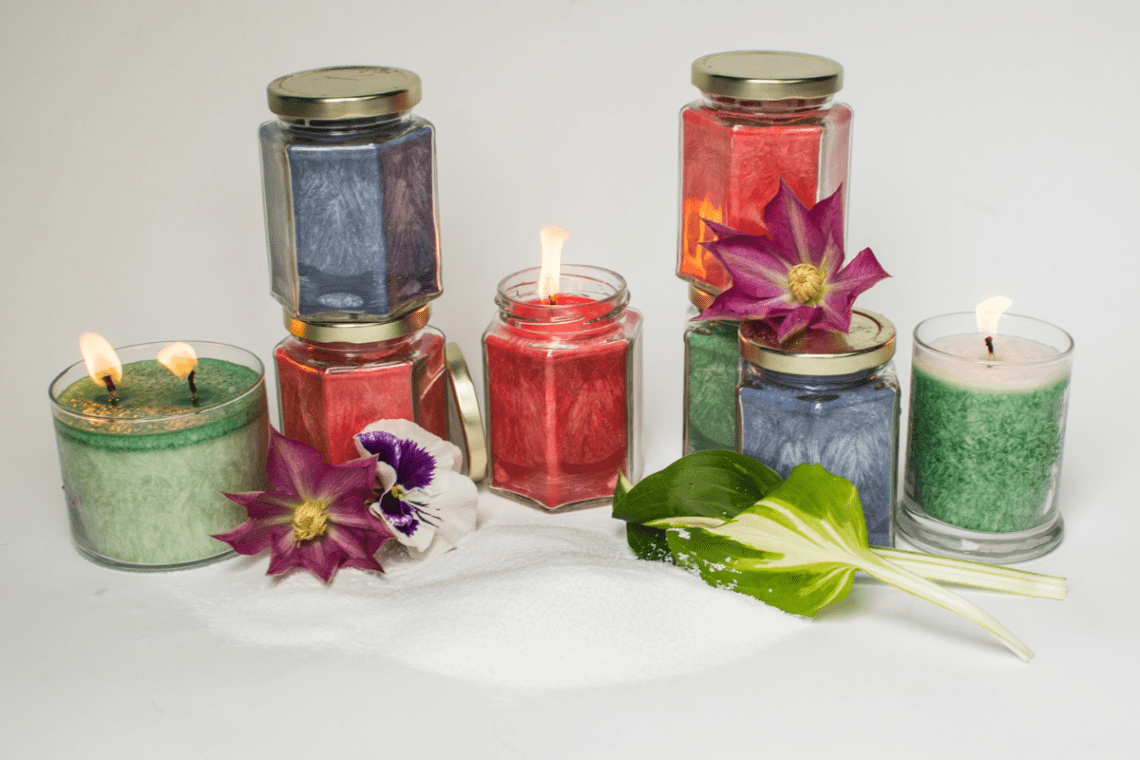
What you need to know about Palm Wax For Candle Making
Palm wax candles have gained popularity as an eco-friendly and visually captivating option for candle enthusiasts. Derived from palm oil, palm wax offers several benefits, including sustainability, unique crystalline appearances, and a clean burn.
If you’re looking to get into candle making as a hobby or potentially as a business, it’s important to understand the types of wax options out there. Many people purchase wax in bulk, add a wick to a container, and pour, and think that is all there is to candle making. But it is more of a science than you think. There are scent throws, fragrances, and wick widths and burn rates that all need to be taken into consideration when selecting your candle wax.
In this comprehensive guide I put together, I’ll delve into the properties of palm wax, explore its benefits, discuss its potential drawbacks, and provide insights into when and how to use paraffin candles for the best results.

Overview of Palm Wax
Palm wax is a natural vegetable wax derived from the oil of palm trees. It is extracted through a process that separates the oil from the fibrous husks of palm fruits. The resulting wax has a distinctive crystalline structure that adds a touch of elegance to candles.
Benefits of Palm Wax
Sustainability: Palm wax is considered a sustainable option when sourced responsibly from certified plantations. It is derived from a renewable resource, palm trees, and supports the livelihoods of local communities.
Unique Aesthetics: Palm wax candles have a captivating crystalline appearance that sets them apart from other wax types. These visually appealing patterns make them an ideal choice for decorative candles or adding a touch of elegance to any setting.
Excellent Scent Throw: Palm wax has a natural ability to hold and release fragrance, providing a strong and pleasant scent throw when combined with high-quality fragrance oils.
Clean Burn: Palm wax candles burn cleanly, producing minimal soot and smoke. They are known for their steady flames and long burn times.
Not quite sure which type of candle wax to use? Check out my comprehensive guide on the types of wax out there and which is best for your needs.
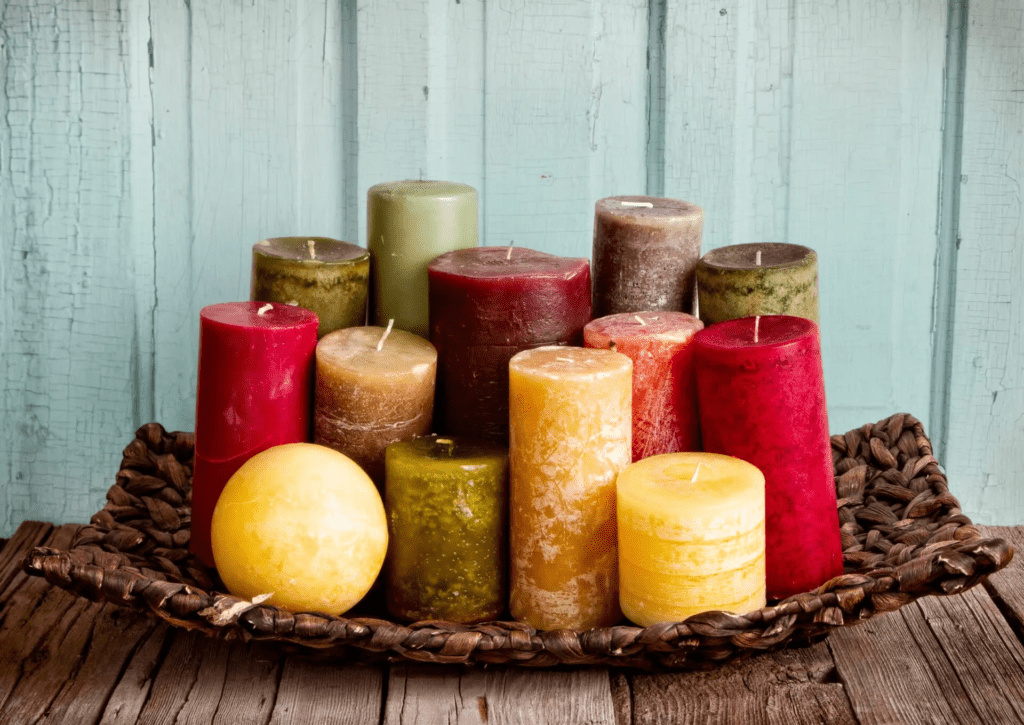
How and When to Use Palm Wax
Decorative Candles: Palm wax’s unique crystalline structure makes it an excellent choice for creating decorative candles, such as those with embedded objects or layered designs.
Special Occasions: Palm wax candles add an elegant touch to special events, weddings, or romantic evenings, creating a warm and enchanting ambiance.
Home Fragrance: Palm wax candles are suitable for infusing your space with delightful aromas. Their excellent scent throw makes them an ideal choice for aromatherapy or creating a relaxing atmosphere.
Gift Giving: Palm wax candles, with their visually appealing aesthetics, make thoughtful and sophisticated gifts for loved ones.
Potential Drawbacks of Palm Wax
Environmental Concerns: The cultivation of palm oil can contribute to deforestation, habitat destruction, and displacement of indigenous communities. To mitigate these concerns, it is crucial to choose palm wax sourced from certified sustainable plantations.
Limited Availability: Palm wax may be less readily available compared to other wax types, which can affect its accessibility and pricing in some regions.

Tips for Using Palm Wax
Choose High-Quality Palm Wax: Selecting premium-grade palm wax is crucial for achieving optimal results. Look for sustainably sourced palm wax from reputable suppliers, preferably certified by recognized organizations promoting sustainable practices.
Preparing the Palm Wax: a. Melting Method: Use a double boiler or a dedicated melting pot to melt the palm wax gently. Avoid direct heat to prevent overheating or discoloration. b. Temperature Control: Heat the wax to the recommended melting temperature indicated by the manufacturer to maintain its integrity and crystalline structure.
Adding Color and Fragrance:
- Dye Selection: Opt for dye chips or liquid dyes specifically formulated for palm wax. Experiment with different colors and proportions to achieve the desired shades.
- Fragrance Oil Compatibility: Use fragrance oils that are suitable for palm wax, as not all oils are compatible. Ensure the fragrance oil is added at the recommended temperature and follow the manufacturer’s guidelines for optimal scent throw.
Mold Selection and Preparation:
- Mold Types: Choose molds that can withstand high temperatures and provide sufficient support for the molten palm wax. Silicone molds are a popular choice due to their flexibility and ease of demolding.
- Mold Preparation: Before pouring the palm wax, ensure the molds are clean and dry. Applying a mold release agent or a light coat of vegetable oil can aid in easy release.
Pouring the Palm Wax:
- Controlled Pouring: Pour the melted palm wax slowly and steadily into the molds to minimize air bubbles and ensure an even distribution of wax.
- Layering Techniques: For layered or multi-colored candles, allow each layer to cool and solidify before pouring the next layer. This ensures distinct separation and clean lines.
Cooling and Demolding:
- Cooling Time: Allow the palm wax candles sufficient time to cool and solidify completely. Avoid moving or disturbing them during this process to maintain the desired crystalline patterns.
- Demolding: Gently flex or twist the mold to release the cooled palm wax candles. If needed, place the mold in the freezer for a few minutes to facilitate easy removal.
Finishing Touches:
- Trimming the Wick: Trim the wick to approximately ¼ inch before lighting the palm wax candle to ensure a steady flame and optimal burn performance.
- Polishing the Surface: Use a soft cloth to gently buff the surface of the palm wax candle for a smooth and polished appearance.
- Decoration: Embellish the candles with ribbons, charms, or other decorative elements to enhance their visual appeal.
Candle Burning and Safety:
- First Burn: During the initial burn, allow the palm wax candle to create a full melt pool across the diameter of the candle to prevent tunneling and ensure an even burn in subsequent uses.
- Burn Time: Aim for a burn time of 2-3 hours per session to prevent overheating and maintain a consistent burn rate.
- Safety Precautions: Never leave a burning candle unattended and keep it away from flammable objects. Place candles on a heat-resistant surface and out of reach of children and pets.
Palm wax candles offer sustainability, unique aesthetics, and excellent fragrance throw. By choosing responsibly sourced palm wax, candle enthusiasts can enjoy the beauty of these candles while contributing to the preservation of ecosystems and local communities. Whether used for decorative purposes, special occasions, or home fragrance, palm wax candles add elegance and charm to any setting.
If you’re looking for a reputable company to buy quality candle wax, check out Nature’s Garden Candle Co.
If you are looking for some fun and creative candle making projects, check out some of my other posts. I love working with cement and glass containers and floral/succulent candle projects! They are surprisingly easy to do and make the perfect gift!

